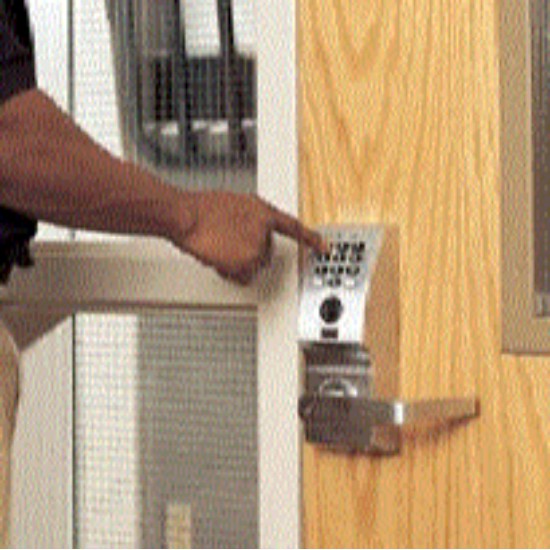
When selecting doors for your facility, it is equally important to consider life safety, security, and ADA compliance. The following post outlines national standards for these issues, but you should always check your local code to ensure compliance when selecting fire doors.
Life Safety
Standards set by: National Fire Protection Association (NFPA) 101’s Life Safety Code
Purpose: Fire safety
NFPA 101’s Life Safety Code specifies guidelines for fire doors, which prevent the flow of toxic smoke and fumes throughout the facility in the event of a fire. Fire doors are rated for their fire resistant and protection based on how long they can withstand exposure to fire test conditions. The rating of fire doors must match that of the wall on which they are installed, although fire walls are able to rate higher than fire doors. When this happens, the highest rated door is used. For example, a fire wall can be rated at 4 hours, but fire doors and frames can only rate as high as 3 hours. So a 3-hour door is used on a 4 hour rated wall. Fire doors are required to be inspected and maintained on an annual basis.
NFPA 101, Chapter 14: Means of Egress
Security
Standards set by: Builders Hardware Manufacturers Association (BHMA)
Purpose: Protect people and property
BHMA’s standards outline the performance parameters of door hardware to protect people and property. These standards ensure that doors and related hardware are sturdy enough to withstand normal use, abuse and even break-in attempts. The door products and hardware are tested and certified by BHMA to ensure compliance. Be aware, these certifications ensure a minimum standard – they are not a recommendation for top performing doors and hardware.
BHMA standards
ADA Compliance
Standards set by: ADA (Americans with Disabilities Act) Standards for Accessible Design
Purpose: Providing access to people with disabilities
If you own or manage a facility that is open to the public, you need to ensure that all people are able to independently access and exit the building. The ADA Standards for Accessible Design are issued by the Department of Justice and provides guidelines on accessibility. The International Code Council (ICC) provides specifics on how hardware should be installed and function to provide this accessibility.
It is imperative that you check the local code for what is required from these standards can vary greatly. In general, all doors should allow everyone, including those with a wheelchair, to
pass through. Exit doors should have a simple operation, such as pushing, to open it. Exit doors, and directional signs to exit doors, should be marked with tactile signs. This primer for small businesses is an easy overview of ADA requirements for commercial buildings. [https://www.ada.gov/regs2010/smallbusiness/smallbusprimer2010.htm]
ADA Standards
ICC A117.1
A1 is a leading expert on the latest technology in life safety. To find out more information or to ask a question, click here or call us at1-800-859-6198.
